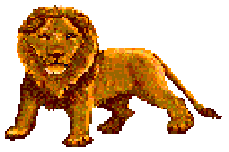Approaches to Cognitive Science
Lecture 2: Mental Representation
What is a representation?
Representations
Pictures, maps photos, symbols, logos, cartoons, animations, movies,
written text, diagrams are all examples of external representations.
What is a representation?
- A representation is something that stands for something else.
- It must convey some aspects of the represented world.
Palmer's (1978) 5 features of a representational system:
- what the represented world is
- What the representing world is
- What aspects of the represented world are being modeled
- What aspects of the representing world are doing the modeling
- What are the correspondences between the two worlds
Representational system
| | Represented world |
Representing world |
|---|
| i | ii | iii |
|---|
| Objects |
 |
A |  | 15 |
|---|
 |
B |  | 4 |
| Properties | height | Not directly represented | Line length | Numeric range |
|---|
| Relations | taller than | TALLER (A,B) | LONGER THAN | GREATER THAN |
|---|
Mental Representations
What about representations in the mind?
- What features do they have?
Theories of mental representations are about representations of brain states and not of the world.
- represented world is brain states
- representing world is theoretical structures
- examples of theoretical structures include mental images, mental models, rules, analogies, concepts, schemas
Theories of mental representation - (i) mental images
What form do mental images take?
- Not pictures in the mind that are read by a little person inside the head (the homunculus fallacy).
- Not an infinite number of photos stored away in a library (the slide projector model).
So what are they?
- Images are generated, dynamic and transient.
- Images are used in a whole range of mental activities (solving problems, memorising information, daydreaming).
Theory of mental images
Kosslyn (1983) has developed a theory of mental imagery which uses the "brain is like a computer" metaphor.
Mental events (images, thoughts) are conceived as corresponding to the functional operations of a computer.
Images can be manipulated in a computer as symbols are, with operations such as rotation and deformation, and then displayed.
But who watches the display?
No-one, since mental images are not pictures but symbols in a matrix.
Theories of mental representations - (ii) Propositions
Most cognitive scientists have focused on theorising about propositional
representational systems.
Knowledge about the world is assumed to be represented as a set of
discrete symbols.
- These include relations (e.g. on, near, besides)
Knowledge is stored in terms of concepts, categories and properties of
these.
- e.g. cat: animal, pet, furry, 4 legs, tail, purrs.
Concepts are represented by formal statements.
- e.g. is-a(cat, animal), under(cat, table), has(cat, 4 legs)
- On(c1, t1) [cat c1 is on table t1]
Other kinds of knowledge representation
Knowledge in long term memory is assumed to be represented in a variety
of propositional formats.
- e.g. schemas, rules, semantic nets
Declarative vs. procedural knowledge
- Declarative is assumed to be represented as a formal proposition, e.g.
rule.
- Procedural is assumed to entail an active process or procedure.
Example: semantic nets
Combine propositional statements with a graphical representation giving
proximity to related bodies of knowledge.

References
- Aitkenhead, A.M. and Slack, J.M. (1985) Issues in Cognitive Modelling.
Chapters 2, 3, 4.
- Kosslyn, S. (1983)
Ghosts in the Mind's Machine.
Maintained by:
David Young
With thanks to Yvonne Rogers








